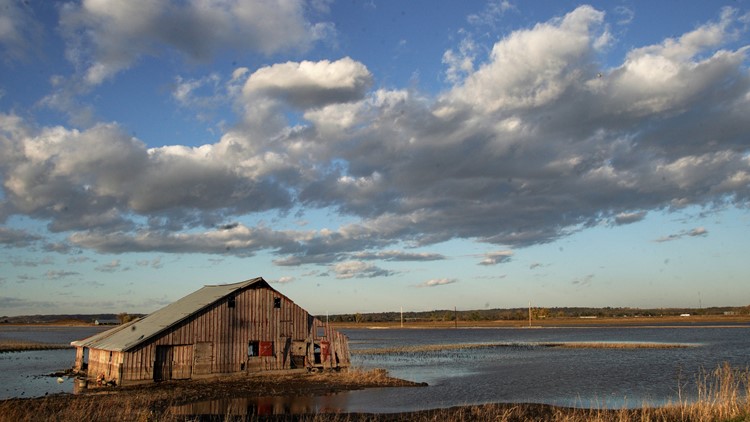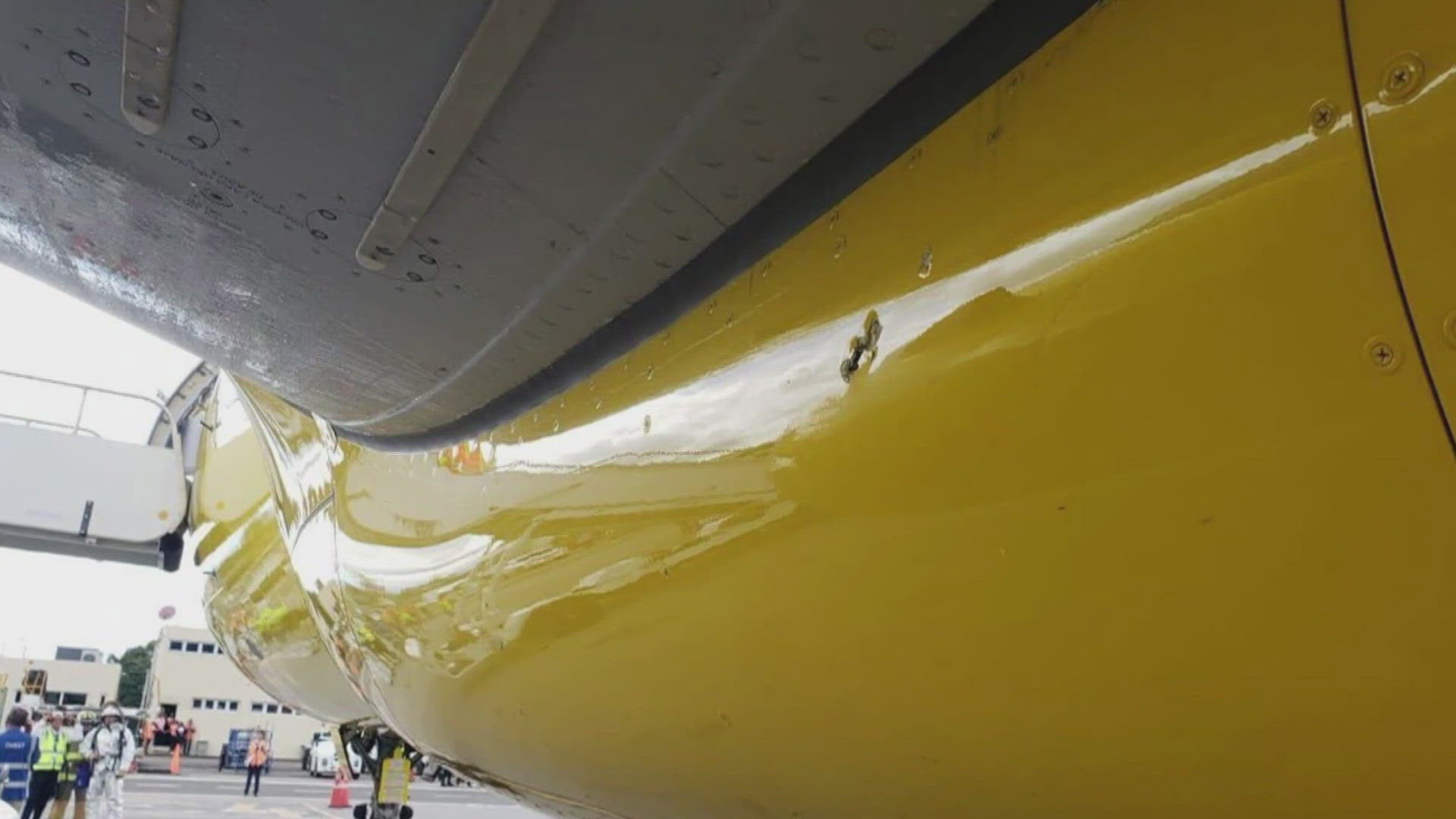DES MOINES, Iowa — The Quad City River Bandits had an impossible time drawing a crowd opening night last spring. Its minor league ballpark was surrounded by water two-stories high after the Mississippi River overran its banks and flooded downtown Davenport. With flooded streets and walkways, the team was forced to play elsewhere in Iowa and gave up nearly two dozen home games.
But the team was not alone. Many areas across Iowa, which is bordered by the Missouri River in the West and the Mississippi in the East, had been rendered unusable by rising waters.
Days before the Iowa caucuses on Feb. 3, infrastructure and flooding are a top concern for Iowans, especially after 50 Iowa levees were breached in 2019, and the outlook for this spring is not much better.
In Davenport, the third-largest city in Iowa, nothing prevents the Mississippi River from sweeping in. There are no permanent flood walls or levees guarding the water and no firm plans in place, even after the April flooding, to build some. Water infrastructure is lacking, leaving citizens scrambling for support against worsening environmental conditions.
Standing outside in line for presidential candidate and businessman Andrew Yang’s event in Perry, landscape architect-in-training Natalie Jensen talked about her experience with flooding. Jensen, who’s worked at the firm Confluence since her graduation from Iowa State University, said that they are designing around flood risk like using permeable pavers and porous materials to reduce standing water.
“Des Moines especially has been more aware of it,’ Jensen said. “Omaha, Nebraska, has been very affected by it. It totally tore out a part of the interstate,” highway she said.
Jensen said her uncles and cousins who are farmers, who lost significant portions of their crops, and are being careful where they will plant now to avoid a chance of flooding.
According to the Iowa Flood Center at the University of Iowa, there are several initiatives aimed at reducing flooding. One of these is the Iowa Watershed Approach, which focuses on nine district watersheds in Iowa. Each site, from the Upper Iowa River to North Racoon River, will develop their own hydrologic assessment, watershed plan and flood resilience programs. The ultimate goal is to use the information to create a wider plan for Iowa, its neighboring states and other communities affected by flooding.
At a national level, politicians from Sen. Cory Booker(D-NJ) to Sen. Bernie Sanders the independent of Vermont, have spoken on these issues in Iowa, reiterating their support for the Green New Deal and rebuilding infrastructure in an attempt to reach voters.
According to Bill Neidhardt, the Midwest press secretary for Sanders for President, the campaign is committed to rebuilding infrastructure in environmentally-sustainable ways.
“There is a nationwide mobilization to address rebuilding our infrastructure, addressing rebuilding our conservation lands and forests and streams and trees,” Neidhardt said.
“But also rebuilding that water infrastructure that has been decimated both at the municipal level, think Flint and citizens across the Midwest, and also along large rivers like the Mississippi that flood regularly,” he said.
Tom Rendon, who has lived in Des Moines for 20 years, thinks Sanders will address environmental challenges, both in Iowa and nationally.
For Rendon, there needs to be drastic changes, and soon.
“Our infrastructure is no longer adequate to how extreme these challenges are,” Rendon said. “So it’s a man-made problem or a human-made problem, and therefore it’s only going to have a human-made solution,” he said. “But we got to change a lot of fundamental things about how we grow crops and how we grow food.”
Across the state, citizens in the small town of Creston stood in a coffee shop to listen to Booker in early January when he was still a candidate for president.
“We need to make a massive infrastructure investment in our waterways, our locks, dams, which are unfortunately in horrible condition all over our country,” Booker said.
“We need to start planning because these hundred year floods, five hundred year floods, are increasing in frequency,” he said. “So we need to start planning a resiliency plan for waterways.”
One Iowa voter, Charles Abarr, said, “We need to maintain our infrastructure in general, not just on the river. It would be a way to deal with climate change and all our tampering with nature. Most of it’s on the Missouri River, which is not too far away from here. But yeah, it’s had a lot of impact on people in western Iowa, particularly this year.”
To Louisianans, the story is familiar. Also plagued by floods and crumbling infrastructure, one pressing concern is the state of the Old River Control Structure. The structure which is nearly 50 years old, acts as a floodgate by diverting Mississippi River water into the Atchafalaya River, and is in need of updating.
Studies have found that increased sediment buildup and rising river flow have reduced the structure’s efficiency, especially seen in 2011, when the structure was nearly breached.
Clinton Willson, director of the LSU Center for River Studies, said infrastructure surrounding the Old River Control Structure needed to be carefully examined.
“The flooding and failing infrastructure in the upper basin is a warning that we need to look at the future of the MR&T [Mississippi River and Tributaries Project] as a whole, and ensure that it is functional for the coming decades,” Willson said. “And, as a final thought, we will need to consider the impact that the system, designed for flood control and navigation, may have on ecosystems.”
Sen. Amy Klobuchar, the Minnesota Democrat running for president, said as president she will address environmental issues like flooding. During the taping of an interview with Iowa public TV, Klobuchar told the story of her friend living in tiny town in Western Iowa who had the entire first floor of her house flooded by an overrun river.
“We are already seeing a 50% increase in homeowner’s insurance because of all the flooding and fire that we’re seeing across our country,” Klobuchar said. “You see parts of Iowa where people have lost their homes.”
Sarah Procopio contributed to this story. This article is part of a series by LSU journalism students in Iowa.
► Get breaking news from your neighborhood delivered directly to you by downloading the new FREE WWL-TV News app now in the IOS App Store or Google Play.



